
In this month’s Tudor Life magazine is perfect for the month of October as it’s all about the Supernatural and the Tudors. Packed with fascinating articles about the spookier side of history.
[Read More...]
In this month’s Tudor Life magazine is perfect for the month of October as it’s all about the Supernatural and the Tudors. Packed with fascinating articles about the spookier side of history.
[Read More...]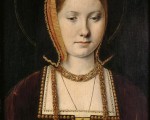
24th September:
1486 – Arthur, Prince of Wales and son of Henry VII, was christened at a lavish ceremony at Winchester Cathedral.
1516 – Birth of Richard Pate, lawyer, member of Parliament and refounder of Cheltenham Grammar School, now known as Pate’s Grammar School.
1526 – Sometime before 24th September 1526, Marmaduke Huby, Abbot of Fountains since 1495, died at around the age of 87. It is thought that he was buried under the floor of the chapter house.
1561 – Birth of Edward Seymour, Viscount Beauchamp, son of Katherine Grey (sister of Lady Jane Grey) and Edward Seymour, 1st Earl of Hertford, in the Tower of London. He was born in the Tower because his parents had been imprisoned for marrying without the Queen’s permission.
1589 – Executions of William Spenser, Roman Catholic priest and martyr, and layman Robert Hardesty at York. Spenser was executed for being a priest, and Hardesty for sheltering Spenser.
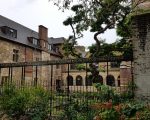
After another delicious breakfast at the Arden Hotel in Stratford-upon-Avon – French toast and I shared it with Francis I and Elizabeth I, as you can see! – we said our goodbyes to Stratford and set off for London. We arrived in London for lunch and then headed to London Charterhouse.
London Charterhouse has such a fascinating history. The land was used as a burial site for victims of the Black Death in 1348 and then in 1371, the Carthusian monastery was built. You might remember me telling you about that Carthusian Martyrs of Henry VIII’s reign, monks from this very monastery who refused to sign the oath recognising Henry VIII as supreme head of the Church in England and who were brutally executed or starved to death. The monastery was dissolved in the 1530s and it then passed through the hands of Sir Edward North; John Dudley, Duke of Northumberland; North again; Thomas Howard, 4th Duke of Norfolk; Philip Howard, 13th Earl of Arundel; Elizabeth I; Thomas Howard, Earl of Suffolk, and Thomas Sutton. Elizabeth I visited it on several occasions.
[Read More...]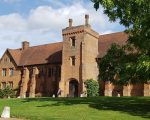
After breakfast, we said goodbye to the Harte and Garter Hotel and travelled on to Hatfield House in Hertfordshire.
Although the main palace is Jacobean, having been built in 1611, in the reign of James I, it houses many treasures from the time when there was a 15th century palace on the site, the home that Elizabeth knew in her childhood and youth. The only part of that former palace that still survives today is the part of the houses that houses the Banqueting Hall with its wonderful original timber roof.
[Read More...]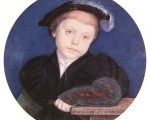
17th September:
1558 – Death of Walter Devereux, 1st Viscount Hereford, at the Devereux seat at Chartley in Staffordshire. He was buried in Stowe church. Devereux served Henry VIII as joint Constable of Warwick Castle, as a member of the jury at the trial of Edward Stafford, Duke of Buckingham, in 1521, in the government of the Welsh Marches, as Steward in Princess Mary’s household at Ludlow and Chamberlain of the Court of General Surveyors. He also served Edward VI as a Privy Councillor.
1563 – Death of Henry Manners, 2nd Earl of Rutland, courtier and soldier, during an outbreak of the plague. He was buried at Bottesford parish church in Leicestershire. Manners served Edward VI as Warden of the East and Middle Marches on the Scottish borders, joint Lord Lieutenant of Lincolnshire and Nottinghamshire, and Lord Lieutenant of Nottinghamshire. He was imprisoned when Mary I came to the throne for his support of John Dudley, Duke of Northumberland, but was released into house arrest and then pardoned. He served Mary I as Captain-General of Horsemen and Lieutenant and Captain-General in Calais. During Elizabeth I’s reign, he served as Lord Lieutenant of Nottinghamshire and Rutland, and President of the Council of the North.
1575 – Death of Heinrich (Henry) Bullinger, the Swiss reformer and theologian, in Zurich. Bullinger succeeded Huldrych Zwingli as pastor at Grossmünster and head of the church in Zurich. His main work was “The Decades”, a theological work, but his sermons were also translated and published, and he wrote historical works.
1577 – The Edict of Poitiers ratified the Treaty of Bergerac, which had been signed between Henry III of France and the Huguenot princes.
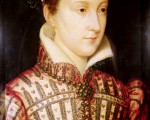
10th September:
1515 – Thomas Wolsey was made Cardinal.
1533 – Princess Elizabeth, daughter of Henry VIII and Anne Boleyn, was christened at the Church of Observant Friars in Greenwich.
1543 – Death of Sir Edward Chamberlayne, Oxfordshire gentleman and soldier. He was buried at Woodstock.
1547 – The Battle of Pinkie Cleugh, part of the War of the Rough Wooing between England and Scotland. Click here to read more.
1549 – Death of Sir Anthony Denny, Henry VIII’s great friend and groom of the stool, at Cheshunt. He was buried in St Mary’s Church, Cheshunt.
1557 – Execution of Joyce Lewis (née Curson and other married name Appleby, Lady Appleby), Protestant martyr, at Lichfield. She was burned at the stake for her Protestant beliefs.
1569 – Death of Gilbert Bourne, Bishop of Bath and Wells, at Silverton in Devon. Bourne was deprived of his see in Elizabeth I’s reign after refusing to take the “Oath of Supremacy”. He was buried in Silverton Church.
1604 – Death of William Morgan, Bishop of St Asaph and Bible translator, at the Bishop’s Palace at St Asaph. He was buried there in the cathedral church.
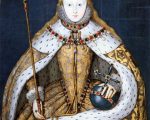
There are so many articles, videos, talks etc. on Elizabeth I on the Tudor Society site so I thought I’d make a list of some of them, you can find others by using the search box.
[Read More...]
3rd September:
1553 – Edward Courtenay was created Earl of Devon. He had been imprisoned in 1538, at the age of twelve, due to his family’s links with the Poles and Nevilles, but was released shortly after the accession of Mary I.
1557 – News reached London that the English and Imperial troops had been successful in storming St Quentin, and there were widespread celebrations; bonfires were lit, bells were rung and there was singing. The good news was marred, however, by news of the death of Henry Dudley.
1588 (3rd or 5th September) – Death of Richard Tarlton, actor and famous clown, in Shoreditch. He was buried in St Leonard’s Church, Shoreditch. Tarlton was a member of the Queen’s Men, but is famed for his post-play jigs as a clown.
1592 – Death of writer and playwright Robert Greene in Dowgate. He died from a fever and was buried in a churchyard near Bedlam. Greene was a prolific writer, writing autobiographical works, plays and romances, but is best known for his pamphlet “Greene’s Groats-worth of Wit bought with a Million of Repentance”, which is the first contemporary reference to William Shakespeare. It was actually an attack on Shakespeare, whom Greene accused of plagiarism, and of being uneducated.
1597 – Death of Sir John Norreys (Norris), military commander, at his brother Thomas’s home, Norris Castle in Mallow, co. Cork. He died in his brother’s arms, and it is thought that his death was due to trouble from old wounds, perhaps gangrene. Norris served as a soldier in France, the Low Countries and Ireland.

27th August:
1549 – The Battle of Dussindale took place, ending Kett’s Rebellion in Norfolk.
1557 – The storming of St Quentin by English and Imperial forces. Admiral de Coligny and his French troops, numbering only a thousand, were overcome by around 60,000 soldiers, and St Quentin fell. Henry Dudley, the youngest son of the late John Dudley, Duke of Northumberland, was killed by a cannonball during the storming.
1590 – Death of Pope Sixtus V at Rome.
1610 – Funeral of Lady Anne Bacon (née Cooke), mother of Sir Francis Bacon, at St Michael’s Church, near St Albans. Anne was the daughter of Sir Anthony Cooke, and was known for her translation of John Jewel’s “Apologie of the Church of England”.
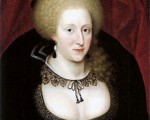
20th August:
1509 – Birth of Sir William Stanford (Staunford), judge and legal writer. Stanford served Mary I as one of her queen’s Sergeants, and is known for his legal books, “Les plees del coron” (1557), on criminal law, and “Exposicion of the Kinges Prerogative” (1567)
1580 – Death of Sir George Bowes, soldier and administrator, at Streatlam, county Durham. He was buried in the family vault at Barnard Castle Church. Bowes served Elizabeth I as a member of the Council of the North and the Ecclesiastical High Commission for York, a Justice of the Peace and Sheriff, and as the Earl of Sussex’s Deputy in co. Durham and Richmondshire, and Provost Marshal. Bowes was also chosen to escort Mary, Queen of Scots from Carlisle to Bolton Castle in 1568.
1588 – A thanksgiving service was held at St Paul’s in London to give thanks to God for England’s victory over the Spaniards.
1589 – Marriage of James VI of Scotland and Anne of Denmark, second daughter of King Frederick II of Denmark, by proxy at Kronborg Castle, Helsingør, Denmark. James was represented by his ambassador at the Danish court, George Keith, 5th Earl Marischal.
1599 – Death of Sir Thomas Norris, soldier and Lord President of Munster, at his house at Mallow, County Cork, Ireland. Norris died from an injury to his jaw sustained in a skirmish with Thomas Burke and his troops in May 1599.
1610 – Death of courtier Edmund Tilney, censor of plays and Master of the Revels. He was buried in St. Leonard’s Church, Streatham, London.
1648 (or 5th August) – Death of Edward Herbert, 1st Baron Herbert of Cherbury and 1st Baron Herbert of Castle Island, diplomat, philosopher and the author of “The Life and Raigne of King Henry the Eighth”. He was buried at St Giles-in-the-Fields, London.

13 August:
1514 – Princess Mary Tudor, sister of Henry VIII, married King Louis XII by proxy at Greenwich Palace. Mary was present at the ceremony, but the Duke of Longueville stood in for the groom.
1566 – Death of Sir Humphrey Radcliffe, member of Parliament, at his manor of Elstow. He was buried in Elstow Church. Radcliffe served as a member of Parliament during the reigns of Mary I and Elizabeth I, and then as a JP and Sheriff in Elizabeth I’s reign.
1568 – Death of William Barlow, Bishop of Chichester. He was buried in Chichester Cathedral.
1579 – Executions of Roman Catholic martyrs Friar Conn O’Rourke and Patrick O’Healy, Bishop of Mayo. They were hanged just outside Kilmallock, co. Limerick. O’Healy was tortured before his death, by having spikes driven through his hands, in the hope that he would give Sir William Drury, Lord President of Munster, details on James fitz Maurice Fitzgerald’s plans to lead a Catholic crusade to Ireland. He would not talk. O’Healy was beatified in 1992.
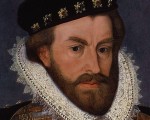
Christopher Hatton was born around 1540 during the reign of Henry VIII. He had a particularly interesting life, originating from a gentry family with few connections to the royal family. He was the second son of William Hatton and his wife, Alice, daughter of Lawrence Saunders. Very little is known of his early life, excepting that his early education is said to have been supervised by his maternal uncle, William Saunders. Regarding his later education, it is recorded that on 26th May 1560 he was enrolled in the Inner Temple. However, this part of Hatton’s life is equally as elusive; arguments suggesting that he may have been a barrister. Hatton’s fame and position came through the unusual concept, by sixteenth-century standards, of ‘social mobility’; essentially rising from one’s social class through personal merit and skill rather than relying on nepotism or family wealth. Hatton did this through monopolising on a relationship with Queen Elizabeth I, which shall be the primary focus of this article.
[Read More...]
6 August:
1504 – Birth of Matthew Parker, Archbishop of Canterbury, in the parish of St Saviour, Norwich. Parker was the son of worsted weaver William Parker and his wife Alice Monings [Monins] from Kent.
1514 – Marriage of Margaret Tudor, sister of Henry VIII and widow of James IV of Scotland, and Archibald Douglas, 6th Earl of Angus, at Kinnoull in Perthshire.
1549 – Battle of Clyst Heath during the Prayer Book Rebellion.
1623 – Death of Anne Hathaway, wife of William Shakespeare. Anne was buried next to her husband in the Church of the Holy Trinity, Stratford-upon-Avon.
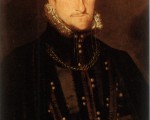
23 July:
1543 – Mary of Guise and her daughter, Mary, Queen of Scots, escaped from Linlithgow Palace, where they were being watched, to Stirling Castle. They were helped by Cardinal Beaton.
1563 – Death of Cuthbert Vaughan, soldier and Muster-Master and Comptroller of the English garrison at Newhaven (actually Le Havre), from the plague.
1584 – Death of John Day, Protestant printer, bookseller and publisher of John Foxe’s “Actes and Monuments” (“Book of Martyrs”), at Walden in Essex. He was buried at Little Bradley parish church in Suffolk.
1596 – Death of Henry Carey, 1st Baron Hunsdon, Privy Councillor and Lord Chamberlain, at Somerset House. Hunsdon was the son of William Carey and his wife, Mary Boleyn, sister of Anne Boleyn. Mary was mistress to Henry VIII at some point in the 1520s, and some people believe it is possible that Hunsdon was actually fathered by the King.
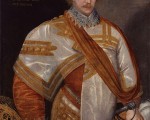
9th July:
1539 – Execution of Sir Adrian Fortescue, courtier and landowner, on Tower Hill. He was condemned for treason by act of attainder, but it is not known what he had done to deserve this. He was beatified in 1895 as a martyr, but historian Richard Rex points out that he is unlikely to have opposed Henry VIII’s supremacy because he was a cousin of Anne Boleyn.
1540 – It was declared that the marriage of King Henry VIII and Anne of Cleves was null and void, and that both parties were free to marry again. The couple had only been married six months.
1553 – Nicholas Ridley, Bishop of London, preached at St Paul’s Cross denouncing Henry VIII’s daughters, Mary and Elizabeth, as bastards. The congregation were “sore annoyed with his words”.
1553 – The Duke of Northumberland officially informed Lady Jane Grey of Edward VI’s death in front of the Council and nobles, going on to explain the terms of Edward’s will which named Lady Jane Grey as the heir to the throne. Lady Jane Grey accepted that she was Queen.
1553 – Mary (future Mary I) wrote to the Privy Council stating her claim to the throne and demanding their allegiance. Click here to read more.
While Mary was writing this letter, John Dudley, Duke of Northumberland, was informing his daughter-in-law, Lady Jane Grey, of Edward VI’s death and informing her that the King had nominated her as his successor. Jane collapsed weeping and declared “The crown is not my right and pleases me not. The Lady Mary is the rightful heir.” Northumberland and Jane’s parents then explained Edward’s wishes to the distressed Jane, and she accepted the crown as her duty.
1575 (9th-27th) – Elizabeth I was entertained at Kenilworth Castle by Robert Dudley, Earl of Leicester. It was a special visit in that it lasted nineteen days and was the longest stay at a courtier’s house in any of her royal progresses.
1586 – Death of Edward Sutton, 4th Baron Dudley, soldier and landowner, at Westminster. He was buried in St Margaret’s, Westminster. Sutton served as a soldier in Henry VIII’s reign in Ireland and Boulogne, and in Edward VI’s reign against the Scots. He was made a Knight of the Bath at Mary I’s coronation, and then given Lordship of Dudley Castle, where he entertained Elizabeth I in 1575.
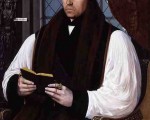
2nd July:
1489 – Archbishop Thomas Cranmer was born in Aslockton, Nottinghamshire, England. He was the son of Thomas Cranmer, and his wife Agnes (nee Hatfield). He served Henry VIII and Edward VI as Archbishop of Canterbury but was burnt at the stake for heresy by Mary I on 21 March 1556.
1497 – Death of Sir William Haute, composer and cousin of Elizabeth Woodville. Haute was Sheriff of Kent at various times, as well as a Justice of the Peace and Commissioner. According to his biographer, Peter Fleming, he was also a patron of musicians, and a composer, composing carols and “polyphonic settings of the Benedicamus domino”.
1536 – Thomas Cromwell formally appointed Lord Privy Seal in Thomas Boleyn’s place.
1540 – Henry Fitzalan, the future 12th Earl of Arundel, appointed Deputy of Calais, replacing Arthur Plantagenet, Viscount Lisle.
1557 – Baptism of Philip Howard, 13th Earl of Arundel, son of Thomas Howard, 4th Duke of Norfolk, and his wife Mary (née Fitzalan). He was baptised in the Chapel Royal at Whitehall Palace with Philip of Spain and Nicholas Heath, Archbishop of York, standing as godfathers and Elizabeth Howard, dowager Duchess of Norfolk, standing as godmother.
1594 – Burial of Robert Scarlett (Old Scarlett), sexton at Peterborough Cathedral. A verse accompanying his portrait in the cathedral states that he buried Catherine of Aragon and Mary, Queen of Scots at the cathedral, but it is not known whether this is true.
1610 – Burial of Richard Knolles, historian and translator, at St Mary’s Church, Sandwich. His works include “The Generall Historie of the Turkes” (1603), The “Six Bookes of a Commonweale” (1606), which was a translation of Jean Bodin’s “La république”, and a translation of Camden’s “Britannia”, which was not published.
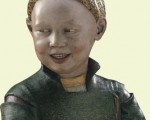
25th June:
1503 – Catherine of Aragon was formally betrothed to Prince Henry, the future Henry VIII, and second son of Henry VII. She had been married to Arthur, Prince of Wales, Henry VII’s eldest son, but he died in 1501 after only six months of marriage.
1533 – Death of Mary Tudor, Queen of France, the thirty-seven-year-old sister of Henry VIII and wife of his friend Charles Brandon, Duke of Suffolk. She died at her home, Westhorpe Hall in Suffolk, and was buried at the local abbey in Bury St Edmunds, Suffolk. When the abbey was dissolved, however, her remains were moved to St Mary’s Church, Bury St Edmunds. Click here to read more.
1539 – Baptism of courtier Gregory Fiennes, 10th Baron Dacre, the younger son of Thomas Fiennes, 9th Baron Dacre, and Mary, the daughter of George Neville, Baron Bergavenny.
1601 – Death of Peregrine Bertie, 13th Baron Willoughby, Beck and Eresby, at Berwick upon Tweed. He died of a fever. Bertie was the only son of Richard Bertie and Katherine, Duchess of Suffolk, 12th Baroness Willoughby de Eresby and the well known Protestant patron. Bertie was a soldier, nobleman, ambassador, Governor of Berwick upon Tweed and Warden of the East March.
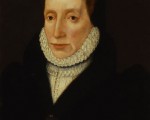
18th June:
1529 – Opening of the Legatine Court at Blackfriars to hear the case for the proposed annulment of Henry VIII’s marriage to Catherine of Aragon.
1546 – Anne Askew was arraigned at London’s Guildhall for heresy, along with Nicholas Shaxton, Nicholas White and John Hadlam (Adlams or Adams). She was sentenced to be burned at the stake.
1558 – Proving of the will of Robert Recorde, Welsh mathematician and physician. His date of death is not known, but is thought to have been mid June 1558. He is known for introducing the “equal to” sign, i.e. “=”. He published several mathematical works.
1588 – Death of Robert Crowley, Protestant printer, author, poet and Church of England clergyman. He was buried in the chancel of St Giles Cripplegate under the same stone as his great friend martyrologist, John Foxe.
1592 – Death of Francis Wyndham, Judge, at the Committee House, St Peter Mancroft, Norwich. His trials included the treason trials of John Somerville and William Parry in the 1580s, and his legal knowledge led to him being approached for advice on Mary, Queen of Scots.
1616 – Death of Thomas Bilson, Bishop of Winchester, at Westminster. He was buried at Westminster Abbey.
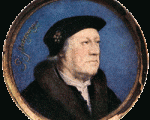
11th June:
1456 – Birth of Anne Neville, Queen Consort of Richard III, at Warwick Castle. Anne was the daughter of Richard Neville, 16th Earl of Warwick and 6th Earl of Salisbury, known as the Kingmaker, and his wife, Anne Beauchamp.
1488 – Death of James III of Scotland, at Sauchieburn, or “the field of Stirling”. It is not known whether he died in battle or after the battle.
1509 – Marriage of Henry VIII and Catherine of Aragon at Greenwich Palace .
1540 – Birth of Barnabe Googe, translator and poet. Googe is known as one of the earliest English pastoral poets.
1544 – Bishops ordered by Henry VIII to ensure that the new litany was “in our native englysshe tonge”.
1560 – Death of Marie de Guise (Mary of Guise), former consort of James V and regent of Scotland, at Edinburgh Castle. Her body lay in a lead coffin at the castle, in St Margaret’s Chapel, until March 1561 when it was taken back to France. Marie was buried in the convent of St Pierre at Rheims.
1576 – Death of Sir Anthony Cooke, humanist and educator. Cooke educated his daughters to a high standard, teaching them Latin and Greek, and probably also modern languages and Hebrew. He was appointed royal tutor to Edward VI, but it is not known whether he actually tutored the King. It may have been more of a guiding role. He was buried at Romford, and his effigy can be seen at St Edward’s Church there.
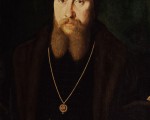
4th June…
1534 – Death of Sir Edward Guildford at Leeds Castle. Guildford acted as guardian to John Dudley (future Duke of Northumberland) and held the posts of Marshal of Calais, Constable of Dover Castle and Lord Warden of the Cinque Ports.
1536 – Jane Seymour was proclaimed Queen at Greenwich Palace. Charles Wriothesley, the Tudor chronicler, recorded: “Also the 4th daie of June, being Whitsoundaie, the said Jane Seymor was proclaymed Queene at Greenewych, and went in procession, after the King, with a great traine of ladies followinge after her, and also ofred at masse as Queen, and began her howsehold that daie, dyning in her chamber of presence under the cloath of estate.”
1550 (some sources say 5th June) – Robert Dudley married Amy Robsart at the royal palace of Sheen at Richmond, near London. The marriage was attended by the then king, Edward VI.
1561 – The spire of St Paul’s Cathedral caught fire after being struck by lightning. The fire melted the Cathedral’s bells and lead from the spire “poured down like lava upon the roof”……
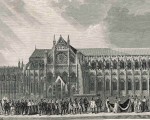
28th May:
1509 – Death of Edward Courtenay, 1st Earl of Devon. He was buried at Tiverton.
1533 – Archbishop Thomas Cranmer proclaimed the validity of Henry’s marriage to Anne Boleyn.
1535 – Birth of Sir Thomas North, translator, in London.
1582 – Executions of Roman Catholic priests Thomas Forde, John Shert and Robert Johnson at Tyburn. They were hanged, drawn and quartered.
1611 – Funeral of Thomas Sutton, founder of the London Charterhouse.
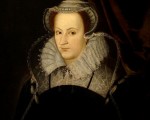
14 May:
1511 – Death of Walter Fitzsimmons, Archbishop of Dublin and Lord Deputy of Ireland, at Finglas, Dublin. He was buried in the nave of St Patrick’s Cathedral.
1523 – Death of Nicholas Vaux, 1st Baron Vaux, courtier and soldier, at the Hospital of the Knights of St John of Jerusalem in Clerkenwell.
1571 – Matthew Stewart, Earl of Lennox and regent to James VI, held the “Creeping Parliament”.
1595 – Death of Anne Fiennes (née Sackville), Lady Dacre, at Chelsea. She was buried in the More Chapel, Chelsea, next to her husband, Gregory Fiennes, 10th Baron Dacre.
1629 – Death of Jean Gordon, Countess of Bothwell and Sutherland. She is known for having been married, albeit briefly, to James Hepburn, 4th Earl of Bothwell, who went on to marry Mary, Queen of Scots. In 1573 she married Alexander Gordon, 12th Earl of Sutherland, and after his death she married Alexander Ogilvy of Boyne, the man she had been in love with before she married Bothwell.
1635 – Burial of Helena Gorges (née Snakenborg), Lady Gorges, in Salisbury Cathedral. Helena was married twice, firstly to William Parr, Marquis of Northampton (brother of Catherine Parr), and secondly to Sir Thomas Gorges, courtier.
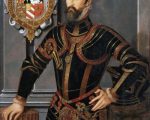
William Herbert, 1st Earl of Pembroke, soldier and magnate and a man who served four monarchs, was the second son of Sir Richard Herbert of Ewyas (the illegitimate son of William Herbert, 1st Earl of Pembroke, of the 8th creation) and his wife, Margaret, daughter of Sir Matthew Cradock of Swansea. Richard served King Henry VII as a gentleman usher. Very little is known of Herbert’s early life, only that he lost his father in 1510 and was then brought up by his mother and her third husband, William Bawdrip.
In 1514, Herbert entered the service of Charles Somerset, Earl of Worcester, who was married to Herbert’s half-uncle’s daughter. John Aubrey recorded that William Herbert was known as ‘Black Will Herbert’ and that he was ‘a mad fighting fellow’. Aubrey also recorded that Herbert was illiterate, which seems to be a baseless accusation, and that he killed a mercer in Bristol and then fled to France, joining the army of Francis I. It is not known whether that claim was true and his name does appear in a coroner’s report.
[Read More...]
7th May:
1535 – John Fisher, former Bishop of Rochester, was visited by Thomas Cromwell, Master Secretary, and member of the King’s Council. Cromwell read out the “Act of Supremacy” and Fisher refused to acknowledge the King as the supreme head of the Church, saying “The King owre Soveraign Lord is not supreme hedd yn erthe of the Cherche of Englande.” It is alleged that Richard Rich tricked him into saying those words, telling him that the King wished to know his real opinion in secret, but whatever the truth of the matter, Fisher was found guilty of treason and executed on 22nd July 1535.
1536 – Queen Anne Boleyn’s chaplain, William Latymer, was searched by the mayor and jurates of Sandwich on his arrival back in England. He was returning from a business visit to Flanders, a visit he had undertaken on behalf of the Queen. Latymer had often brought Anne religious books back from the Continent, so it was lucky for him that he did not have anything which could have been deemed as heretical in his luggage. Records were made of the books that he was carrying and of those which he was having sent directly to London, but he was allowed to carry on with his journey.
1540 – Death of Sir William Weston, Prior of the Hospital of St John of Jerusalem in England. He died at the priory on the day that the order to dissolve it was passed through the Commons. He was the uncle of Sir Francis Weston, a man executed in 1536 in the coup against Anne Boleyn.
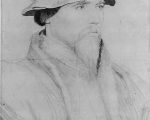
Sir John Gage was born on 28th October 1479 and was the only son of William Gage of Burstow and his wife, Agnes, daughter of Bartholomew Bolney of Bolney in Sussex. Gage was baptised in Burstow, where he was born, but the family later moved to Firle, near Lewes.
In 1499, Gage became a ward of Robert Tate, alderman of London, and in 1502 Gage married Philippa, daughter of Sir Richard Guildford of Cranbrook who was comptroller of the royal household. This marriage match was good for Gage in that it helped him to join the royal household, which he did by becoming an esquire of the body to King Henry VII. He continued in this role after the accession of 17-year-old Henry VIII in 1509.
Gage served as a Justice of the Peace for the counties of Sussex (1514) and Surrey (1528) and by 1522 he had been appointed as deputy to Sir Nicholas Vaux, who was serving as captain of Guînes. This was due to the patronage of Sir William Sandys who was serving as treasurer of Calais. In August 1522, Gage was granted survivorship of the office of comptroller of Calais, because the comptroller, Sir Robert Wotton was ill, and he became comptroller in 1524 on Wotton’s death. He served in the campaigns in France in the 1510s and 1520s and was rewarded with a knighthood in 1525.
[Read More...]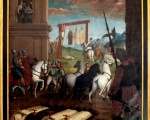
1532 – James Bainham, lawyer and Protestant martyr, was burned at Smithfield.
1536 – Scottish theologian Alexander Alesius witnessed an argument between Queen Anne Boleyn and Henry VIII, and at 11 o’clock that night, the King and Queen’s upcoming visit to Calais was cancelled and arrangements made for the King to journey alone a week later. Also 30th April, court musician and member of the Boleyn circle, Mark Smeaton, was taken to Thomas Cromwell’s house in Stepney and interrogated. Within twenty-four hours, he had confessed to making love three times to the Queen.
1544 – Death of Thomas Audley, Baron Audley of Walden and Lord Chancellor, at his home in Aldgate, London. Audley was Cromwell’s right-hand man in 1536, during the fall of Anne Boleyn, and became even more important after Cromwell’s fall.
1547 – Sir Anthony Denny was made Henry VIII’s Groom of the Stool.
1563 – Death of Henry Stafford, 10th Baron Stafford, at Caus Castle, Shropshire. Stafford was the only legitimate son of Edward Stafford, 3rd Duke of Buckingham, and his wife, Eleanor, daughter of Henry Percy, 4th Earl of Northumberland.
1595 – Death of Thomas Bedwell, mathematician, engineer and keeper of the ordnance store at the Tower of London. He was buried at the Tower, in the Chapel of St Peter ad Vincula. Bedwell’s engineering projects included him supervising the building of Dover harbour, giving advice on the fortification of Portsmouth and working on the River Thames’ defences at Tilbury and Gravesend in 1588, at the time of the Spanish Armada.
1596 – Death of Sir John Puckering, administrator and Speaker of the House of Commons, from apoplexy. Puckering’s other offices included Serjeant-at-Law, Recorder of Warwick, Privy Councillor and Lord Keeper of the Great Seal. In 1587, he was involved in the trial of Elizabeth I’s secretary William Davison, appearing for the Crown. He was buried at Westminster Abbey, in St Paul’s Chapel.
1596 – Death of Thomas Bickley, Bishop of Chichester, at the bishop’s palace in Aldingbourne. He was buried in his cathedral.
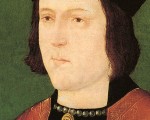
1500 – Birth of Alexander Ales (Alesius, Aless), Scottish theologian and reformer, at Edinburgh. His mother was Christina Bigholm, and his actual surname seems to have been Alan or Allane. He changed his name when he went into exile, choosing “Alesius”, meaning “bird”, or in this case, “exile”.
1512 – Birth of Henry Fitzalan, 12th Earl of Arundel, son of William Fitzalan, 11th Earl of Arundel, and Anne (née Percy), daughter of Henry Percy, 4th Earl of Northumberland. At his baptism, Henry VIII stood as his godfather. He served Henry VIII as Deputy of Calais, Privy Councillor and Lord Chamberlain.
1536 – Sir Nicholas Carew was elected to the Order of the Garter at the annual chapter meeting at Greenwich, rather than George Boleyn, brother of Queen Anne Boleyn.
1564 – Traditional birthdate of William Shakespeare, the Bard. It is not known on what date Shakespeare was actually born but he was baptised at Stratford-upon-Avon on 26th April 1564, and baptism usually took place around three days after birth.
William Shakespeare also died on this day in 1616. He was buried at the Holy Trinity Church, Stratford-upon-Avon, in the chancel.
23 April, St George’s Day, was the traditional day for announcing new appointments to the Order of the Garter, the highest order of chivalry in England.

9th April:
1483 – Death of Edward IV at the Palace of Westminster. He was laid to rest in St George’s Chapel, Windsor Castle, on 20th April. His cause of death is unknown. It may have been caused by a chill, but he was known for overindulging in food and drink, and that would not have helped his health.
1533 – A delegation of the King’s councillors, headed by the Duke of Norfolk, visited Catherine of Aragon and informed her that Henry VIII was now married to Anne Boleyn. After they left, Catherine’s Chamberlain, Sir William Blount, 4th Baron Mountjoy, had to tell her that she had been demoted from Queen to Dowager Princess of Wales.
1557 – Cardinal Reginald Pole’s legatine powers were revoked by Pope Paul IV.
1582 – Death of Richard Bertie, evangelical, member of Parliament and second husband of Katherine Willoughby (other married name Brandon), Duchess of Suffolk, at Bourne. He had met Katherine when he became her Gentleman Usher. He was buried with Katherine, who died in 1580, at Spilsby.
1590 – Funeral of Ambrose Dudley, Earl of Warwick. He was laid to rest in the Beauchamp Chapel of St Mary’s Church, Warwick.
1626 – Death of Francis Bacon, Viscount St Alban, Lord Chancellor, politician and philosopher. It appears that Bacon died from inhaling nitre or opiates in a botched experiment.
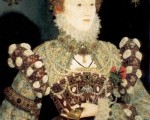
On this day in history, 24th March 1603, Queen Elizabeth I died at Richmond Palace. She was sixty-nine years old and had ruled for over forty-four years.
You can click here to read more about her death, but I thought it would be useful to list some Elizabeth I resources for you here:
[Read More...]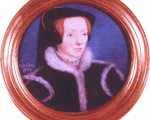
19th March:
1563 – Deaths of Arthur Brooke, translator and poet, and Sir Thomas Finch, knight-marshal, in the shipwreck of the Greyhound, off the coast of Rye in East Sussex.
1563 – Peace (Edict) of Amboise signed at the Château of Amboise by Catherine de’ Medici, as regent for her son, Charles IX. Catherine initiated this truce after the assassination of Francis, Duke of Guise, at the Siege of Orléans. The Edict ended the first phase of the French Wars of Religion and guaranteed the Huguenots religious privileges and freedoms. Peace did not last long, however.
1568 – Death of Elizabeth Seymour, Lady Cromwell. Click here to read more.
1577 – Death of Edmund Harman, former barber of Henry VIII, at Burford in Oxfordshire. He had retired there after Henry VIII’s death. Harman was buried at Taynton Church.
1590 – Baptism of William Bradford, separatist and founder of the Plymouth Colony, Massachusetts, at Austerfield in Yorkshire. Bradford was Governor of the colony for over thirty years.